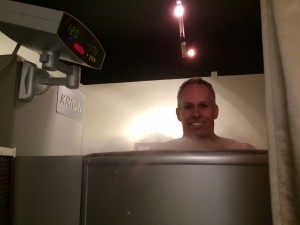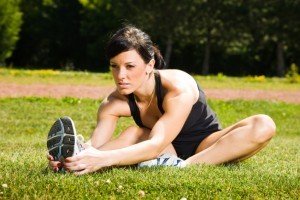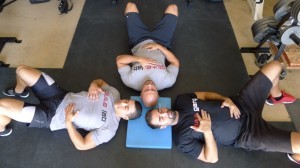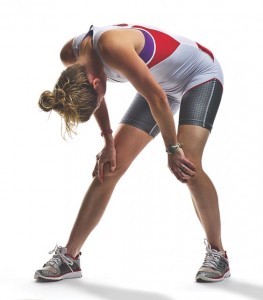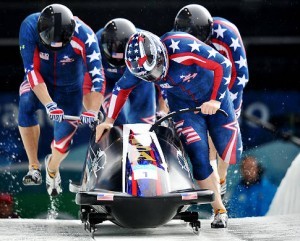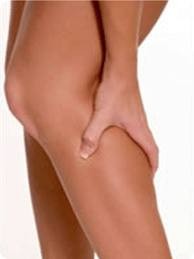When I was younger I used to train with my brother. And we would follow a typical bodybuilding split. What I mean by that is that our training days were divided up based on body parts and certain exercises.In other words our workouts might have looked something like this:Day 1 - legs, arms and absDay 2 - glutes, chest and absDay 3 - back, shoulders and absA few things should jump up at you right away. First of all, what does 'legs' mean? Is this quads, hamstrings or calves? Or all three?Apparently abs were really important with bodybuilding and they never require a rest day. And getting huge, or swole as the kids now like to say, was priority numero uno. No one did cardio.A warm-up involved a few light sets under the bar before starting in with the first sets of bench press. There was zero stretching or mobility work. And although we did abs it was mostly to target the rectus abdominis, or six pack. We didn't know or care about the core at all.We took rest days when the gym was closed. Otherwise it was simply rotating through this three day rotation looking to add load to the bar at every workout.Although we now know this to be terrible programming it's surprising what hard work over time will achieve. When Jon went to depot for the RCMP I believe he put some lifting records in the weight-room.But we could have gotten even better results. And a study from a few years ago might have given some clues as to how often we could train certain movements and muscles.What the researchers did was look at muscle damage to the arms and legs after training. They wanted to know if there was a difference in recovery between smaller (arm) and...
4 Components for Success
- Chris Collins
- Fitness
- 1711 Hits
- 0 Comments
-
Sometimes I wonder how many people that train are satisfied with their results? I would suspect that those that don't continue training are not satisfied with the results they are seeing. But there must be some that aren't seeing the outcome they had hoped for and continue chugging along. Maybe they feel if they stopped that their health and fitness would be a lot worse than it currently is. Or maybe they really enjoy the process and the fitness community that they train with. I'm not sure? If we look at just the group that doesn't achieve their goal and then quits I would bet that something was missing. And by something I actually means three things. And these would be the plan, the execution and the review. If we don't have these three things in place it makes it really hard, if not impossible, to achieve the best health and fitness possible. Look at it this way. Imagine if back when you were in school you just showed up. You hadn't selected any classes. You didn't know which rooms to go to. You didn't bring any books, pens or anything to write on. There wasn't an agreed upon time to start. And the day finished whenever. And let's imagine as well that the teachers all showed up at random times. And there was no clear assignment of teaching areas. There weren't homerooms assigned for each grade. No lesson plans had been created. And there was no consideration as to what would be taught, to which students and at which level. All that was known or agreed upon was that there was this structure, that was the school, and there were people, usually older with more knowledge, who showed up to pass on some knowledge to the younger people known as students....
Whole Body Cryotherapy -165 C for 3.5 Minutes
Last week I had the opportunity to go and try whole body cryotherapy (WBC). If you're not familiar with what this it's kind of like being in a stand up tanning booth but instead of being strayed with tanning dye you are blasted with nitrogen gas. [caption id="attachment_4794" align="aligncenter" width="300"] 2 mins left at -165 C. Brrrrr!!! In the picture above you can see me standing in the capsule. When you first enter the capsule your head is below the level of the top of the unit. You are then raised up until your head pokes over the top.What you can't see is me in my undies, thermal booties and gloves. The whole process takes 3.5 minutes total. But trust me, you'll want someone else standing there talking to you to distract you from the time remaining. If you're too much of a wimp you can always push open the back door and stop the experience whenever. So what are the purported benefits of WBC? Some of the more popular claims are increased recovery after exercises and how it facilitates rehab post-injury. Since most days involve a training session and I'm currently mending an ACL surgery, it made perfect sense to go and give this a try. While there may be enhanced subjective recovery and decreased muscle soreness the research has yet to come out showing additional benefits (1). At minimum there doesn't appear to any adverse effects to WBC. After the experience I did notice my glutes were cold. And I did feel more alert. I guess this is similar to jumping in the lake this time of year. You will definitely feel refreshed after. If you are interested in knowing more or giving WBC a try, go and talk to the guys at Cryo Care. They're almost next door...
How Often Should You Train?
- Chris Collins
- Fitness
- Training
- 1937 Hits
- 0 Comments
-
When someone gets started with a new fitness routine there are a lot of questions that come up.Everything from 'What should I eat before training and after?', 'Should I do weights before cardio or vice versa?', 'Should I do more or less reps/sets?', 'How long should my workouts be?' and 'How often should I train?'Do any of these sound familiar?I'll bet that not only did they sound familiar when you were starting out with your fitness journey, some of these may still be questions going through your head.Let's take a look at one question for now: 'How often should I train?'.I guess before we get to answering that question, we need to know: why is somebody asking? If we know a little more about the person asking, and the context in which they are asking, it will help us to answer the original question.For example, consider if we had two different people asking the question of how often they should train.Number 1: The first person is a med-school student with a young family. This person is in class, the library or the lab every waking moment. The couple of free hours per day they can find are spent bathing, cooking meals and tending to their children.When this person asks how often they should train it is from a position of 'I know I need to do this but I don't have 30 free minutes per day'.I can hear the frustration and anxiety in their voice when they tell me their reality. For this person I might recommend 5-10 minutes of diaphragmatic breathing and some light stretching to begin or end the day. Anymore on their plate and it just won't get done. And it will leave them more frustrated and sad.Number 2: The second person who has come to me asking this...
Is Cold Water Hindering Your Gains?
- Chris Collins
- Fitness
- Training
- Work-Out Recovery
- 1683 Hits
- 1 Comment
-
Have you ever done things as part of your training that you've changed?I guess I should re-phrase that.Are there parts of your training process that you look back on now and realize it to be wrong?That's not an easy thing to do. And I don't mean that it's hard to recognize mistakes we've made. Instead it's hard to acknowledge that we were wrong. It's hard to admit we weren't right.But that happens. And it's process of the progression of the training process. As better information becomes available it's only natural that we adopt the correct information and update programming accordingly.I'm trying to think of examples and the one that comes to mind is recognizing the value of a dynamic warm-up before activity. It used to be people would static stretch as part of their warm-up and jump straight into training.Imagine going to the start line of 10 km race. Very few racers, especially the contenders, will be on the ground holding static stretches for prolonged periods of time.[caption id="attachment_4686" align="aligncenter" width="300"] Rarely will you see this at the start line of a running race.What you're more likely to see is athletes warming up with motion. They will be doing skip drills, leg swings or some other time of activity to loosen up, warm up, activate the core and stabilizers while stimulating the nervous system.[caption id="attachment_4687" align="aligncenter" width="285"] Warming up with butt kicks.Along the lines of looking into the rear-view mirror to see areas of training that have changed there's one that involves recovery.Maybe you've seen pictures of athletes sitting in ice tubes after training sessions to enhance the recovery process. We believed that the ice bath would help with the inflammation response that followed a training session. The cold temperatures would constrict vessels and decrease blood flow to areas of the body...
How to Recover More Quickly
- Chris Collins
- Fitness
- Training
- Work-Out Recovery
- 1753 Hits
- 0 Comments
-
I've written before about the importance of breathing on this blog. But a recent session with a client caused me to think it may be worth revisiting. The session I am referring to was with a young client who was doing a vertical load of resistance exercises. This basically means he would do one exercise, move to a different second exercise and finish with a third exercise before taking a rest. This is different from horizontal loading, which is seen in many big box gyms, and involves doing a set of a particular exercise, resting for the prescribed amount of time, then repeating this to complete all the sets before moving on to the next part of the training session. Not only does vertical loading allow for greater workout density it also allows for greater intensity. You can train more intensely because you have more time from one lift until you repeat that same lift again. There are two other exercises plus a rest break before completing the next set of the same exercise. But this post isn't about program design. Instead it's to illustrate the importance of proper breathing during training. Now as you can imagine doing a workout of this type your heart rate will begin to climb. And if you are a little bit deconditioned, tired, under-fueled, dehydrated, stressed or coming down with a cold your heart may have to work a little harder than normal to do the task at hand. And as your heart rate climbs and you try to push yourself you may find you aren't recovering adequately to maintain the intensity and pace of your workout. Since safety precedes results you need an option here. Here's what we did for this client that helped him complete not only this set but the rest of...
An Easy Way to Be Better at Every Sport
- Chris Collins
- Fitness
- Training
- 1630 Hits
- 1 Comment
-
Do you remember growing up and having your parents drill into you proper manners? I'm talking specifically ones that had to do with your mouth. You know what I mean? [caption id="attachment_4312" align="aligncenter" width="300"] Poor manners cost him a lucrative pro career. 'Chew your food with your mouth closed' 'Don't smack your gum' 'Close your mouth' And besides helping me develop proper manners and etiquette so I won't be a social outcast this also helped me with my sports performance. So thanks mom & dad! But how exactly does chewing with your mouth closed help with sports performance? Well honestly it has nothing to do with the nutrition and more to do with how we take in oxygen and expire carbon dioxide. I've got to give credit to Mr. Sherwin, my high school science teacher, for teaching me some of the following. Below are 4 benefits of nose versus mouth breathing. Benefit #1 - Nasal air is warmed and humidifiedWhen you consider the location and properties of our lungs we know they are in the chest cavity and moist to facilitate inflation, deflation and gas exchange. The more similar the air we breath in is to this environment the better. For example, air taken in through the mouth needs to warmed and moistened before arriving at the lungs. ***I remember when going to university in Regina riding my bike in the middle of winter. In -35 C weather I learned that although you may be tempted to ride quickly to get out of the cold weather more quickly this caused me to breath through my mouth and typically was followed by a sore throat or chest cold. It was a better strategy to bike more slowly and keep my mouth closed. This allowed me take air in through my nose only and...
Stand Tall for Better Recovery
- Chris Collins
- Fitness
- Training
- Work-Out Recovery
- 1684 Hits
- 0 Comments
-
One of the great things about coaching is that there are plenty of opportunities to train. We never have an excuse for access to equipment. While it's nice to have access to kettle bells, Olympic platforms and anything that makes a session more enjoyable the truth is all we need is gravity for an effective workout. But besides that we're always getting exposed to new training methodologies and research. And so this can become our lab. This is the place we test our theories, see what works, what doesn't and how to make any changes if necessary. And just as the best part of our job is the people we get to work with this place is great in that we can usually find another coach to rope into a training session. Megan, Kayla, Graeme and Jordy all place a high value on training and are always up for the challenge as well. Recently when training with Megan and Kayla I noticed they were doing something at the end of each set. And it's something most of us do usually out of habit. [caption id="attachment_4253" align="aligncenter" width="263"] Kayla or Megan? Take your pick If this were a live presentation and I asked for a show of hands 'who bends over and puts there hands on their knees to recover?' almost 100% of the room would be reaching skyward. But there's a couple of problems with this. First of all let's take a look at what an ideal posture should be. And compare this to the common forward head posture many people have. [caption id="attachment_4254" align="aligncenter" width="300"] Ideal or forward head posture Now if you look at the bottom arrow of the picture on the right you can imagine this is close to where the pelvis would sit. The picture on the...
Does Cold Water Therapy Work?
- Chris Collins
- Fitness
- Training
- Work-Out Recovery
- 1620 Hits
- 3 Comments
-
With the start to a New Year many people will be initiating an exercise routine for the first time, getting back after a lay-off from being active or maybe stepping up their efforts while the motivation at this time of year is higher. Muscle Soreness Accompanies New Physical Activity And with all this extra activity many are going to experience DOMS (delayed onset muscle soreness) and not have a strategy in place to deal with their discomfort. I am one of those people. While I was in Switzerland I had a chance to do some skiing and I wanted to make the most of it. By this I mean riding the gondola up at 745 am for first tracks and not stopping until 3 pm when my legs were getting a little jello-y and I knew I had to call it a day or risk crashing hard. But after 7 hours of hard skiing I knew I would be in rough shape the next day unless I did something for my recovery. So I headed to the hotel gym to do some light cardio to enhance the recovery process. Honourary USA Bobsled Member [caption id="attachment_3793" align="alignleft" width="300"] Check out the newest member of USA Bobsled! Upon arriving at what I thought was the gym I realized I was at the spa which was accessible to those who had booked massages and other spa treatments. As I entered the spa I was behind two other people who were actually members of the USA bobsled team in St Moritz for some World Cup races. The bobsledders mentioned to the spa attendant that they had spa privileges while staying at the hotel. The attendant then proceeded to make up three collections of robes, towels, and shower shoes for the spa. As soon as I...
4 Conditions for Better Sleep
- Chris Collins
- Fitness
- 1692 Hits
- 0 Comments
-
Recently I was sharing with a client how one of the most important factors related to how quickly and how much weight someone loses is not their training program. It isn't the sets and the reps. Or the frequency or duration. Or even the type of activity. And I'm not specifically referring to their nutrition. It isn't the ratio of macro-nutrients. Or the total energy consumed. Or the timing of the meals. Or whether they fasted or not. Sure all these matter and play a role in a weight loss strategy. But these efforts can all be wasted if there isn't one key component of a healthy lifestyle already in place. And this key component is sleep. I'm not going to go into detail in this blog about the impact of sleep and fat loss. If you would like to know more, and are interested in which hormones are involved in sleep and fat loss then make sure to comment below and I'll see you the report. But for now let's focus on getting the best sleep possible. And to do this I've broken this up into four categories which are routine, technology, journal and nutrition. Below is a little more detail on each. Condition #1 for Better Sleep - RoutineIn order to get the best sleep you need to establish a sleep routine. For here the analogy to use is putting a baby to sleep. If you do the same things in the same order each day at the same time before bed a baby will not only know to expect sleep is coming but will actually look forward to sleep. Change the order of the things you do and the baby may not sleep. Do these things at a different time and the baby may not sleep. Change the...
Epsom Salts for Recovery
- Chris Collins
- Fitness
- 1840 Hits
- 2 Comments
-
Today I'm doing a mud run with some clients and our staff. So I thought now would be a good time to step aside and let Matt take a turn with a post for you on using Epsom salts for recovery. After today's event I might just have to have a bath like this myself. Take it away Matt... Have you ever done a workout and then barely been to move the next day? Now, I don’t know about you guys, but I have certainly been sore lately! Our weekly stair runs have been wreaking havoc on my calf muscles. Recently, many clients have been asking me how I recover after hard workouts, and what my thoughts were on Epsom salt baths. Well to be honest, I choose to complete my daily ablutions standing up. More specifically, I am a pure shower guy, and haven’t sat in a bathtub since I was in pre-school. So, for all you bath tub enthusiasts out there this one is for you. What are Epsom salts So what’s the deal with Epsom salts? Magnesium sulfate or Epsom salts are a readily available home remedy thought to ease muscle soreness and tension. But how does this really work? Is it pure mysticism or do these crystalline compounds really target muscle soreness and aid in healing?During exercise, our muscles often accumulate large amounts of lactic acid. Lactic acid is a byproduct of anaerobic metabolism and causes that nasty burning sensation in our muscles during a workout. Most believe that this deposition of lactic acid within the muscles causes that post-workout soreness. This soreness is thought to be due to a microscopic deformation of the protein chains within the muscle fibers. How Epsom salts help with soreness [caption id="attachment_3284" align="alignleft" width="194"] Sore calf muscles Now for a little...
More on Chocolate Milk Post Workout
The other day I finished up a session with a client and we were talking about post-workout nutrition. And as we have chocolate milk for after your workout I offered one to this client. And she had a question regarding drinking chocolate milk. Specifically she wanted to know if it was ok to drink the reduced sugar version. Here's what I told her. After training the body is looking to begin the repair process and replenish metabolites that have been depleted. During training the body uses ATP as the energy source. Carbohydrates are a prime source for generating ATP during training. Some of the cards we eat are stored in the body in the form of glycogen in the muscle and liver. Anyways, it makes sense that after training we've depleted the body's source of glycogen and this needs to be replaced. If we eat only protein we won't have the necessary nutrients to replenish our store of glycogen. This is a common mistake some make with regards to their post-workout nutrition. They believe they need protein, which they do, but nothing else. There is also the belief that more is better and if 20 grams of protein in your post workout shake is good than 40 grams would be better and 50 or 60 grams would probably be best. But here's the thing. 20 grams of whey protein will get the job done. As will 6 grams of branched chain amino acids. Or 2 grams of the essential amino acid leucine. But we tend to follow label instructions on our favourite protein supplement which tells us a serving is 30-50 grams of protein. And the other protein is the lack of carbohydrate. And optimal post-workout formulation would have 3 or 4 times the amount of carbs as protein. A regular...
5 Drinks to Get Familiar With
- Chris Collins
- Nutrition Advice
- 1793 Hits
- 10 Comments
-
So the #1 goal of people who go to the gym is weight loss. And it's like finger nails on a chalk board when I see people making all the right decisions when it comes to training, rest and the foods they eat only to blow it in one area. What is that one area? It's the calories they drink. They will drink coffees with flavoured shots, artificial sweeteners, creams and other additives. They will puree enough fruit for two days and drink this. Worse they will buy the commercial varieties of the juice smoothies which often have well over 100 grams of sugar. They will finish off a hard day's work with a glass or two of their favourite beer or wine. Which normally isn't a problem except when you're trying to drop 20-30 lbs. And so for these people we make the rules very simple. 1. Get all of your nutrition from food. 2. Get your hydration from water. But there are exceptions to the rule. And this post is all about those exceptions. Because at a certain point you should gain control of the calories you drink back. And your water intake should be adequate. And you should be getting all your nutrition from food. And your weight loss should be on track. And if this the case read on to find out how you can begin to reintroduce drinks back into your like. If this is you then here are 5 drinks you can reintroduce back into your lifestyle. 1. Workout Drinks - Are your workouts at least an hour in length? Are workouts fairly intense? By this I mean that you broke a sweat, lifted as heavily as you could and were out of breath at various points during the workout. If you answered 'yes' to...
Quantifying the Pre-Workout Meal
- Chris Collins
- Nutrition Advice
- 1788 Hits
- 0 Comments
-
So we all know the importance of the pre-workout meal. Well, maybe I'm jumping the gun. I should say that I hope we all know the importance of the pre-workout meal.And I should qualify the position I'm coming from on this topic. This is based upon training for performance and athletic excellence. The reason I make the distinction is that there is a growing movement and popularity for intermittent fasting when it comes to weight loss and body composition changes. I'm not referring to this type of goal.When it comes to pre-workout nutrition for a performance goal wer're looking to hydrate and top up the body's supply of glycogen. Glycogen is the body's stored form of carbohydrate which can be found in the muscle and liver. If we have some carbs before training this can help 'spare' muscle glycogen or minimize the depletion of this energy source.And while carbs are our best source to accomplish this we want to make sure to keep the pre-workout levels of fats and protein a little lower. This may seem contrary to what you'll see many 'meat heads' doing as they suck on a protein shake while warming up on the treadmill. Don't follow this lead. Too much protein slows gastric emptying and impairs performance.But while we hear all the time how important it is to eat before training, how important is it really? How much does it impact your performance? Can one meal really make a difference?Consider the following session I had with a client this week. This client wears a heart rate monitor while training and of course we are monitoring loads, recovery times and outputs on energy system work. And for this particular workout the client had not had a pre-workout meal.Here's what happened.When we got to some of the conditioning sets...
2010 Fitness Predictions Revisited
- Chris Collins
- Fitness Predictions
- Training
- 1555 Hits
- 1 Comment
-
Last year I took a look at the trends I was noticing in fitness, saw what my colleagues were doing in other parts of the world and sampled some of the new innovations coming down the line as health products. As while some of these developments are simply fads I believe some of them to be true changes in the industry and here to stay.Below are my 2010 Fitness Predictions that I can now look back and grade myself. How did I do?1. Barefoot Running - Have you tried ditching the shoes? Maybe you own a pair of Five Fingers or some Nike Frees. Have you read the book Born to Run? There are definitely more products, gear and information related to barefoot running. I think we'll see this trend continue in 2011.2. Recovery & Regeneration - There is some evidence that we're more aware of the necessity to recover between workouts. More gyms have foam rollers and more people are using them. There are still a lot gains and results being left on the training room floor when you consider the number of people walking out of the gym without a post-workout shake.3. New Cardio Programs, Equipment and Classes - There maybe wasn't so much an explosion in new program and equipment so much as we saw more people doing intervals of some type as opposed to the regular slow, steady-state cardio they were used to. Consider as the well the number of people performing some type of metabolic resistance training where they alternate between resisted sets to achieve an elevated heart rate and you see people continuing to try something new when it comes to good old cardio.4. Saving Time & $$$ - Part of this one has to do with the economic situation and part of it is due to wanting...
Enjoying Thanksgiving Can Work to Your Advantage
- Chris Collins
- Work-Out Recovery
- 1565 Hits
- 1 Comment
-
Hi there: Hope you're doing well. This has been a great week. You want to know why? I think it's because I've had great perspective lately. I've been really thankful for the good things in my life while not worrying so much about the distractions that can sometimes get us down. It might be the Thanksgiving weekend that has me in this kind of mood but it definitely ties in to your weight loss or performance goals.'Ok, hold on a sec', you're probably saying. 'Did he just say Thanksgiving and weight loss goals in the same sentence.' Absolutely I did. And here's what I mean by it.Our bodies go through both positive and negative stress. The positive stress is called eustress. Sound familiar? Unfortunately for most people this may be the first time they've ever heard of this word. And that says a lot if the positive aspect of stress is so foreign to us we don't even recognize the word for it.So it would make sense then that the balance tends to be skewed towards the negative end of the stress spectrum.But first we should identify a couple of hormones involved with the stress response. These are cortisol and adrenaline.Adrenaline is the hormone associated with 'fight or flight' and results in increased heart rate, elevated blood pressure and boosts energy supplies. We are hard-wired for this response to always be at the ready and thus available to protect and keep us safe.Cortisol is another stress hormone and increases sugar (glucose) in the bloodstream, enhances your brain's use of glucose and increases the availability of substances that repair tissues. It also alters immune system responses and suppresses the digestive system, the reproductive system and growth processes.Let's take a quick look at how stress affects digestion, recovery and training.1. When stress triggers the 'fight or fligt'...
